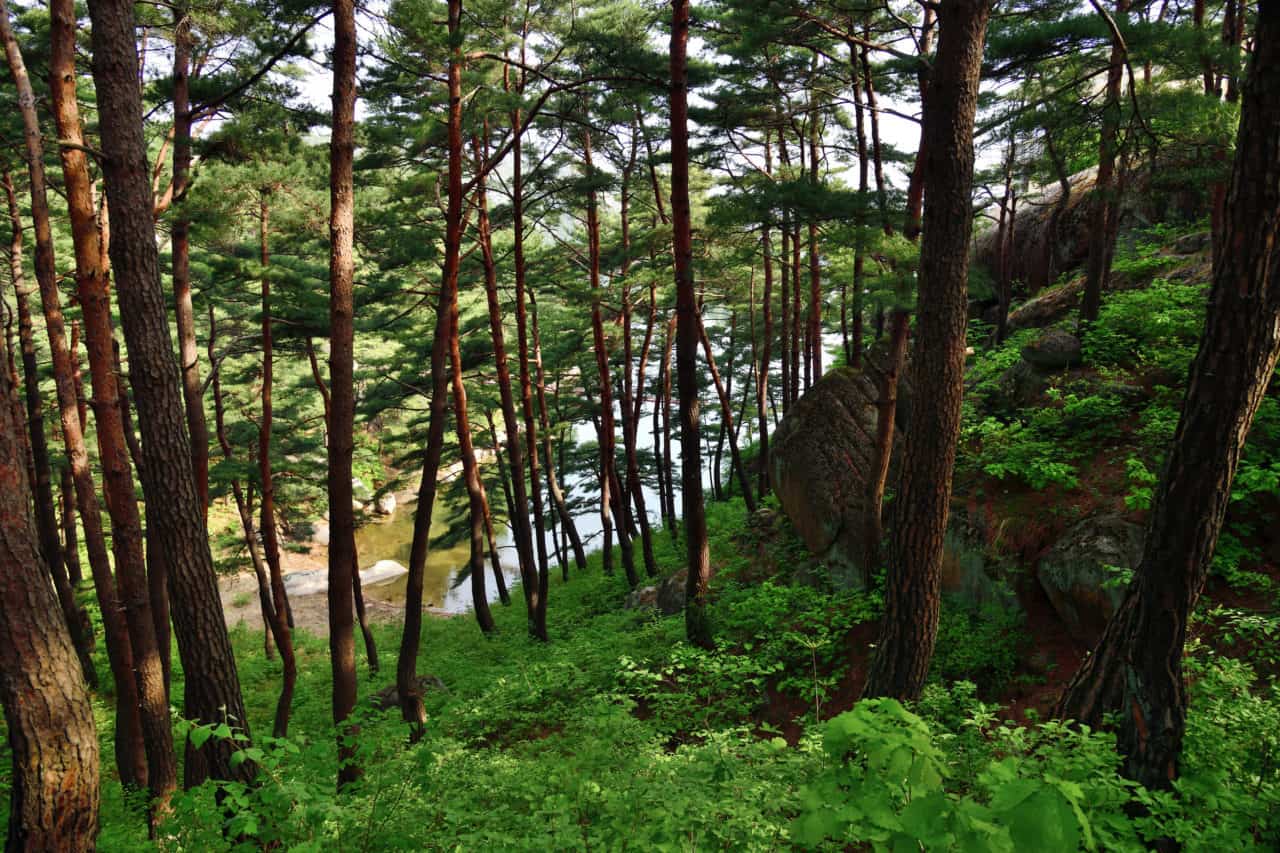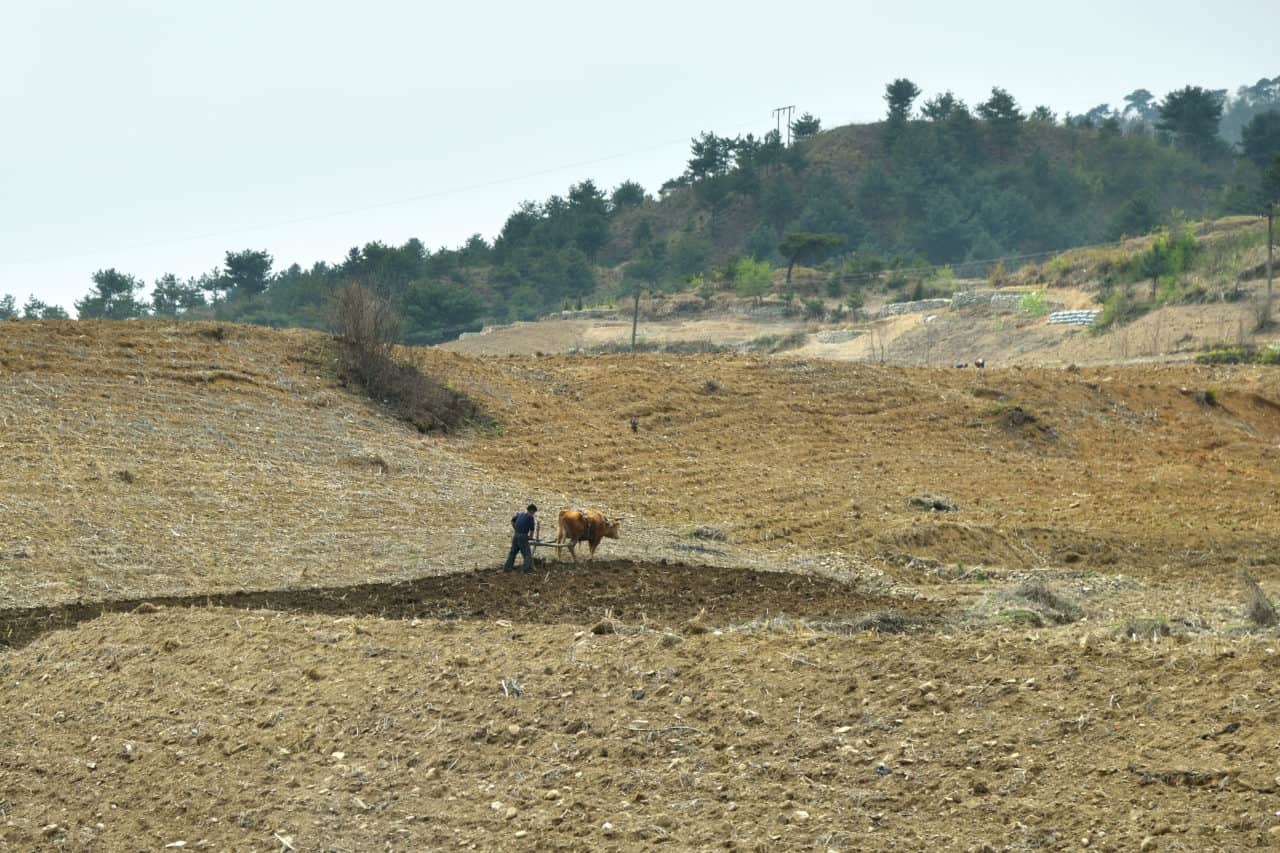Dec 7, 2021 | Climate Change, Environment, Food & Water, Sustainable Development
By Stefan Frank, researcher in the Integrated Biosphere Futures Research Group of the IIASA Biodiversity and Natural Resources Program
Stefan Frank discusses a recent study that looked into the impacts of ambitious EU agricultural mitigation policies on the livelihoods of farmers.

© Milkos | Dreamstime.com
Balancing greenhouse gas (GHG) emissions and removals in the land-use sector by 2035 is one of the key milestones presented in the European Green Deal, but achieving climate neutrality will require further emission cuts in the agricultural sector. However, when it comes to setting ambitious mitigation targets for the sector, (national) policymakers are often reluctant to make strong commitments.
One reason could be the close interactions of agriculture with other policy objectives related to climate change mitigation, such as sustained food production, nutrition security, or biodiversity. Even though agricultural policies are frequently implemented using subsidies, such as in the European Union Common Agriculture Policy, policymakers strive to find a balance that ensures progress on these goals while at the same time not overburdening farmers.
Another fear is that ambitious mitigation efforts could cause economic losses for EU farmers whose income already relies heavily on subsidies. Reducing emissions could for instance lead to increased production costs and a consequent deterioration in the cost-competitiveness of EU farmers when comparing domestic production with imports. For example, the adoption of mitigation practices such as precision farming or anaerobic digesters increase costs, and the reduction in fertilizer application as suggested in the Farm to Fork Strategy may also directly impact crop yields and subsequently revenues.
In our study recently published in the journal Environmental Research Letters, we investigated the impacts of an ambitious EU agricultural mitigation policy on agricultural markets, farmers, and GHG emissions applying an ensemble of agricultural sector models. We investigated two alternative scenarios.
The first scenario represents a situation where only the EU adopts stringent mitigation efforts for agriculture compatible with the 1.5°C target at global scale, while the second imagines a world where other world regions also take action.

Figure from Frank et al. (2021): Average impact across models of different levels of ROW mitigation ambition on EU agricultural production, prices and production value corrected for carbon tax payments in 2050. RUM—ruminant beef, DRY—milk, NRM—non-ruminant meatand eggs, CGR—coarse grains, WHT—wheat, and OSD—oilseeds.
We found that EU beef producers are strongly affected if only the EU pursues stringent agricultural emission reduction efforts. For example, cutting EU agricultural non-CO2 emissions by close to 40% (155 MtCO2eq/yr) in 2050 could result in a 22% decline in EU beef production. Despite emission leakage effects through reallocation of production outside the EU, a unilateral mitigation policy delivers climate benefits and yields net emission savings at global scale of around 90 MtCO2eq/yr.
Once regions outside Europe start to pursue mitigation efforts that are compatible with those in the EU, economic impacts on EU farmers are distributed more equally across world regions as farmers outside the EU are included in the mitigation policy and start contributing. Since EU farmers rank among the most GHG efficient producers at global scale, with increasing mitigation efforts in other world regions, EU farmers don’t lose their competitiveness, even if the EU pursues 1.5°C compatible efforts.
Unlike in the unilateral EU policy, EU farmers could even start to benefit from a globally coordinated mitigation policy beyond a certain point. For example, if regions outside the EU were to pursue at least half the effort implemented in the EU and were required to reach the 1.5°C target globally, the economic value of production of EU beef and non-ruminant producers could exceed baseline scenario projections without any mitigation efforts in agriculture.
Similar effects are observed for other world regions with GHG-efficient agricultural production systems, while GHG intensive producers are projected to lose market shares. Given differences in GHG mitigation efficiencies and economic prospects across world regions, accompanying distributional policies such as climate finance policies could help to alleviate the risk of mitigation induced food security or poverty issues. Our study highlights these economic challenges and opportunities for farmers related to the required transition of the global food system to achieve the 1.5°C target.
Further info:
Frank, S., Havlik, P, Tabeau, A., Witzke, P., Boere, E., Bogonos, M., Deppermann, A., van Dijk, M., et al. (2021). How much multilateralism do we need? Effectiveness of unilateral agricultural mitigation efforts in the global context. Environmental Research Letters 16 (10) e104038. DOI: 10.1088/1748-9326/ac2967 [pure.iiasa.ac.at/17492]
Note: This article gives the views of the author, and not the position of the Nexus blog, nor of the International Institute for Applied Systems Analysis.
Nov 11, 2021 | Brazil, Economics, Environment
By Fanni Daniella Szakal, 2021 IIASA Science Communication Fellow
In an attempt to foster economic development for Brazil, the government is planning to open up indigenous and protected areas for mining. But will this truly lead to economic development for the country? 2021 Young Scientists Summer Program (YSSP) participant, Sebastian Luckeneder is using spatial modeling to find out.

© Prabhash Dutta | Dreamstime.com
As the largest rainforest on the planet, the Amazon harbors the highest biodiversity of all ecosystems and is home to many indigenous tribes. It is also literally sitting on a goldmine of natural resources. There are plans in the works to open up protected and indigenous areas of the rainforest to mining activities, which is expected to bring more wealth and development for the country, but at the same time, it will also pose a threat to the environment and indigenous communities.
At first glance, the issue looks like the classic trade-off between economic growth versus environmental and social disruption. In reality however, mining affects social, environmental, and economic spheres both directly and indirectly, creating a complex network of interactions that potentially defy the current dogma.
Mining relies heavily on machines while creating relatively few jobs in comparison to the investment of capital it requires. In addition, mining companies are often large international corporations, which means that most of the profits gained from mining operations in a particular country end up outside that country’s borders.
“One could say that just the very few benefit from extractive activities, whereas many have to pay the cost,” says Sebastian Luckeneder, a 2021 YSSP participant at IIASA, when referring to the environmental destruction, disruption of livelihoods, and displacement of indigenous communities that mining would bring about.
As a second-year PhD candidate at the Institute for Ecological Economics of Vienna University of Economics and Business (WU), Luckeneder is studying the environmental and socioeconomic impacts of mining activities. At IIASA, he used spatial modeling to understand how mining and land use affect regional economic growth in Brazil in the hopes of finding the best economic solution for the country.
Using GDP growth as a proxy for economic development, he looked at the impacts of mining and other types of land use between 2000 and 2020. The model incorporates data on mining, agriculture, and land-use change, as well as other socioeconomic factors, such as employment and infrastructure for about 5,500 municipalities in Brazil.
The study is as complex as it sounds: Luckeneder’s main challenge is to set up a theoretical framework that depicts how the environmental and socioeconomic factors influence each other. Once his comprehensive model is complete, he hopes to get a clear picture of how mining affects the Brazilian economy.
He suspects that while mining activities would bring some economic gains, these might not be sustainable, as the environmental and social upheaval that follow the opening of a mine could negatively impact development in the long-run.
While economic development is important, in the current climate crisis, decisions to enable activities that lead to deforestation cannot be taken lightly. Luckeneder hopes that his results will be used to inform the political debate in Brazil and support policy decisions by the way of science.
Oct 18, 2021 | Climate, Climate Change, Energy & Climate, Poverty & Equity, Women in Science, Young Scientists
By Marina Andrijevic, researcher in the IIASA Energy, Climate, and Environment Program
Marina Andrijevic tackles some inconvenient but fundamental issues around climate change adaptation.

© Lio2012 | Dreamstime.com
Anyone who followed climate-related headlines this summer would have noticed a more than usual amount of talk on climate change adaptation. As it goes with sudden epiphanies in aftermaths of humanitarian disasters in our Western realities, this time we’ve come to realize that we need to seriously think about doing some adaptation.
To be fair, the realization that adaptation is inevitable has for a long time been somewhat of a taboo in the “woke” climate policy and activist circles (the author of this blog is a millennial and would like to acknowledge that the reader’s idea of a long time in climate policy might be different). Admitting that there might be no other option but to adapt to whatever the locked-in effects of climate change are, is arguably defeatist and gives in to the notion that mitigation alone won’t cut it.
While this might be yet another depressing but accurate reflection of the reality under climate change, portraying adaptation and mitigation as different but equally urgent actions could set a dangerous trap if it produces ideas such as: if we adapt enough, perhaps our economies and energy systems won’t need to change so much.
Even if it would be enough (which it wouldn’t), adaptation will not necessarily just happen once we recognize it needs to be done, because the needs and abilities for it operate on different time horizons and geographical scales. Many parts of the world that need adaptation will not necessarily be able to take action, so we have to be very careful when we count on it as a solution to climate change.
This is where we must tackle some inconvenient but fundamental issues about adaptation. Climate change research, especially the areas positioned at the “interface” with policy, could play a crucial role here. In this role, it must be very prudent and avoid doing a disservice to decision makers, and even worse, to people affected by those decisions. In other words, the scientific assessments need to be careful when assuming for whom, where, and how adaptation can reasonably be expected.
We tried to illustrate why this matters in our recent paper that looks at the capacity of populations to adapt to heat stress. We used air-conditioning as a popular, albeit not (yet) climate-friendly adaptation option. My coauthors and I understand that air conditioning could well be maladaptation, meaning that it causes more harm than good in the long-run. Adaptation practices, however, it turns out, are quite difficult to measure, while installed air conditioners can literally be counted, which makes them handy for plugging into our statistical models. We contend with access to air conditioning currently being a good enough example of access to adaptation and promise to assess more options in the future.
Our paper shows how the capacities to protect against heat stress vary widely around the world. Like with many other unjust manifestations of climate change, people in the world’s hottest areas also have the least means to adapt. We found that countries with more income, more urban areas, and less income inequality, are also the ones where more people have access to air conditioning.
This does not come as the world’s biggest revelation, but it conveniently allows us to make informed guesses on how access to air conditioning might change in 2050 or 2100. This is possible because the research community has already engaged in a group effort to propose five different futures with regard to GDP, urbanization, and income distribution (in climate jargon: the Shared Socioeconomic Pathways or SSPs).
Coupling the potential rates of air conditioning with the people exposed to heat stress based on projections of climate models, lets us calculate the cooling gap – the difference between people exposed to heat stress and people who can protect themselves against it with the use of air conditioning.
Depending on whether we find ourselves in the best- or the worst-case scenario of socioeconomic development could mean anywhere between two billion and five billion people globally unable to protect themselves against heat stress with air conditioning in 2050. This range only grows with longer time horizons, with Sub-Saharan Africa and South Asia being the areas of the world where these differences are the starkest.
We hope that our paper will motivate further investigations of potential gaps in adaptation that point to insufficient adaptive capacity and help to identify the areas and populations most at risk, as well as what additional work needs to be done in terms of socioeconomic improvements before we can reasonably expect adaptation to take place. Our findings on the importance of factors beyond just GDP, suggest that helping communities to build their adaptive capacity doesn’t mean only throwing money at them (although that would make for a decent start!), but international efforts must focus on issues such as eradicating inequalities, supporting smart urban development, strengthening institutions, and providing education.
So, let’s not take it for granted that we will all be able to adapt either now or in the future. Eliminating the causes of climate change must remain the number one policy objective that will help to reduce the need for adaptation in the first place. But number two could be helping communities that have no option but to cope with what’s already coming at them. Highlighting in our research what the implications of different adaptive capacities are for preservation of livelihoods, is a small step towards achieving this.
Reference:
Andrijevic, M., Byers, E., Mastrucci, A., Smits, J., & Fuss, S. (2021). Future cooling gap in shared socioeconomic pathways. Environmental Research Letters 16 (9) e094053. [pure.iiasa.ac.at/17411]
Note: This article gives the views of the author, and not the position of the Nexus blog, nor of the International Institute for Applied Systems Analysis.
Jul 29, 2021 | Korea, Science and Policy, Young Scientists
By Fanni Daniella Szakal, 2021 IIASA Science Communication Fellow
Despite the political challenges, 2021 YSSP participant Eunbeen Park is researching ways to restore forests in isolated North Korea.

© Znm | Dreamstime.com
North Korea is somewhat of an enigma and getting a glimpse into what transpires behind its borders is a difficult task. Based on our limited information, it however seems that its once luscious forests have disappeared at an alarming rate in the last few decades.
Deforestation in North Korea is fueled by economic difficulties, climate change, and a lack of information for effective forest management. As forests are recognized as important carbon sinks that are invaluable when working towards the climate goals established in the Paris Agreement, finding a way to restore them is imperative. Forests are also essential in solving food insecurity and energy issues, which is especially relevant in the face of the current economic hardship in North Korea.
Neighboring South Korea serves as a benchmark for a successful reforestation campaign after having restored most of its forest cover in the last half a century. South Korean researchers and NGOs are keen to support afforestation efforts in North Korea and it seems that the North Korean government is also prioritizing this through a 10-year plan announced by North Korean leader Kim Jong-Un in 2015. The strained relationship between the two Koreas however, often hinders effective collaboration.
‘’We are close to North Korea regionally, but direct connection is difficult for political reasons. However, many researchers are interested in studying North Korea and there are currently many projects for South and North Korea collaboration supported by the Ministry of Unification,” says Eunbeen Park, a participant in the 2021 Young Scientists Summer Program and a second year PhD student in Environmental Planning and Landscape Architecture at Korea University in Seoul, South Korea.

North Korean countryside © Znm|Dreamstime.com
Modeling afforestation scenarios in North Korea
Park specializes in using remote sensing data for environmental monitoring and detecting changes in land cover. During her time at IIASA, she will use the Agriculture, Forestry, and Ecosystem Services Land Modeling System (AFE-LMS) developed by IIASA to support forest restoration in North Korea.
First, Park will use land cover maps dating back to the 1980s to map the change in forest cover. She will then identify areas for potential afforestation considering land cover change, forest productivity, climate, and different environmental variables, such as soil type. She will also develop different afforestation scenarios based on forest management options and the tree species used.
According to Andrey Krasovskiy, Park’s supervisor at IIASA, when selecting tree species for afforestation we need to take into account their economic, environmental, and recreational values.
“From a set of around 10 species we need to choose those that would be the most suitable in terms of resilience to climate change and to disturbances such as fire and beetles,” he says.
Challenges in data collection
A major challenge in Park’s research is obtaining accurate information for building her models. If there is relevant research from North Korea, it is not available to foreign researchers and without being able to enter the country to collect field data in person, her research has to rely on remote sensing data or data extrapolated from South Korean studies.
Fortunately, in recent years, remote sensing technology has evolved to provide high-resolution satellite data through which we are able to take a thorough look at the land cover of the elusive country. Park will match these maps with yield tables provided by Korea University based on South Korean data. As the ecology of the two Koreas are largely similar, these maps are thought to provide accurate results.
Is there space for science diplomacy?
“Research shouldn’t have any boundaries,” notes Krasovskiy. “In reality however, the lack of scientific collaboration between research groups in South and North Korea poses a major obstacle in turning this research into policy. Luckily, some organizations, such as the Hanns Seidel Foundation in South Korea, are able to bridge the gap and organize joint activities that provide hope for a more collaborative future.”
Despite the diplomatic hurdles, Park hopes that her work will find its way to North Korean policymakers.
“I expect my research might make a contribution to help policymakers and scientific officials establish forest relevant action in North Korea,” she concludes.
Jul 1, 2021 | Biodiversity, Climate Change, Ecosystems
By Florian Hofhansl, researcher in the Biodiversity, Ecology, and Conservation Research Group of the IIASA Biodiversity and Natural Resources Program
Florian Hofhansl writes about a successful paper on which he was the lead author that was recently ranked #32 on the list of the Top 100 most downloaded ecology papers published in 2020.
Early in 2020, one of my manuscripts titled “Climatic and edaphic controls over tropical forest diversity and vegetation carbon storage” was accepted for publication in the prestigious journal Nature Scientific Reports.
Initially, I was worried about the bad timing when I was informed that the paper would be published on 19 March – right at the onset of the COVID-19 pandemic – since it took me and my colleagues almost a decade to collect the data and publish our results on the biodiversity and functioning of tropical forest ecosystems.
 However, my worries completely disappeared when I learned that our research article had received more that 3,000 downloads, placing it among the top 100 downloaded ecology papers for Scientific Reports in 2020. This is an extraordinary achievement considering that Scientific Reports published more than 500 ecology papers in 2020. Seeing our paper positioned at #32 of the top 100 most downloaded articles in the field, therefore meant that our science was of real value to the research community.
However, my worries completely disappeared when I learned that our research article had received more that 3,000 downloads, placing it among the top 100 downloaded ecology papers for Scientific Reports in 2020. This is an extraordinary achievement considering that Scientific Reports published more than 500 ecology papers in 2020. Seeing our paper positioned at #32 of the top 100 most downloaded articles in the field, therefore meant that our science was of real value to the research community.
We kicked off our study in the dry-season of 2011 by selecting twenty one-hectare forest inventory plots at the beautiful Osa peninsula – one of the last remnants of continuous primary forest – located in southwestern Costa Rica. We did not expect that our project would receive this much scientific recognition as we were merely interested in describing the stunning biodiversity of this remote tropical region. Nevertheless, we were striving to understand the functioning of the area’s megadiverse ecosystem by conducting repeated measurements of forest characteristics, such as forest growth, tree mortality, and plant species composition.
After periodically revisiting the permanent inventory plots, and recording data for almost a decade, we found stark differences in the composition of tropical plant species such as trees, palms, and lianas across the landscape. Most interestingly, these different functional groups follow different strategies in their competition for light and nutrients, both limiting plant growth in the understory of a tropical rainforest. For instance, lianas – which are long-stemmed, woody vines – are relatively fast growing and try to reach the canopy to get to the sunlight, but they do not store as much carbon as a tree stem to reach the same height in the canopy. In contrast, palms share a different strategy and mostly stay in the lower sections of the forest where they collect water and nutrients with their bundles of palm leaves arranged upward to catch droplets and nutrients falling from above, thus reducing local resource limitation.

Lead author Florian Hofhansl and field botanist, Eduardo Chacon-Madrigal got stuck between roots of the walking palm (Socratea exorrhiza), while surveying one of the twenty one-hectare permanent inventory plots © Florian Hofhansl
Our results indicate that each plant functional group – that is, a collection of organisms (i.e., trees, palms, or lianas) that share the same characteristics – was associated with specific climate conditions and distinct soil properties across the landscape. Hence, this finding indicates that we would have to account for the small-scale heterogeneity of the landscape in order to understand future ecosystem responses to projected climate change, and thus to accurately predict associated tropical ecosystem services under future scenarios.
Our study and its subsequent uptake by the research community, illustrates the value of conducting on-site experiments that empower researchers to understand crucial ecosystem processes and applying these results in next-generation models. Research like this makes it possible for scientists to evaluate vegetation–atmosphere feedbacks and thus determine how much of man-made emissions will remain in the atmosphere and therefore might further heat up the climate system in the future.
Our multidisciplinary research project furthermore highlighted that it is crucial to gather knowledge from multiple disciplines, such as botany (identifying species), plant ecology (identifying functional strategies), and geology (identifying differences in parent material and soil types) – since all of these factors need to be considered in concert to capture the complexity of any given system, when aiming to understand the systematic response to climate change.
Read more about the research here: https://tropicalbio.me/blog
Reference:
Hofhansl F, Chacón-Madrigal E, Fuchslueger L, Jenking D, Morera A, Plutzar C, Silla F, Andersen K, et al. (2020). Climatic and edaphic controls over tropical forest diversity and vegetation carbon storage. Scientific Reports DOI: 10.1038/s41598-020-61868-5 [pure.iiasa.ac.at/16360]
Note: This article gives the views of the author, and not the position of the Nexus blog, nor of the International Institute for Applied Systems Analysis.









You must be logged in to post a comment.